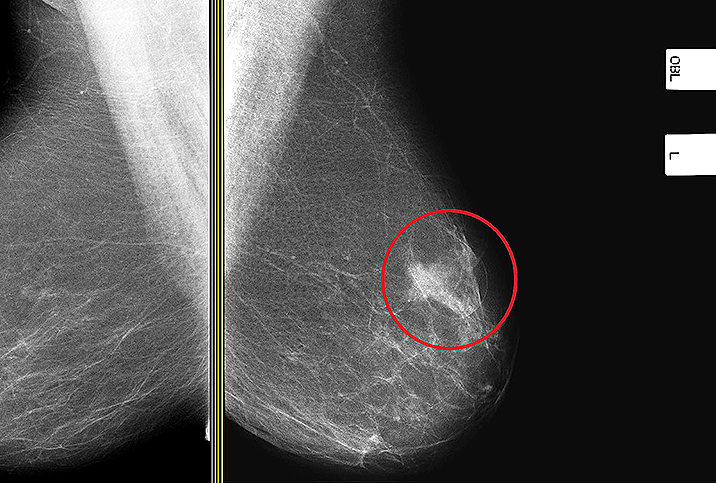Why Breast Density Matters

Breast density refers to the amount of glandular and fibrous tissue compared to the amount of fatty tissue in the breasts. The density can change over time and is more likely to be high if you are undergoing hormone replacement therapy, or if you are young, pregnant, breastfeeding or have low body weight.
About 10 percent of women have extremely dense breasts, and 40 percent of women have evenly dense breasts, according to the Centers for Disease Control and Prevention (CDC).
Breast density & why it matters
Most women do not understand what breast density means, their breast density status and the implications—but they should.
Breast density is determined by dividing the volume of fibroglandular tissue by the total volume of breast tissue. The results are then interpreted through a Breast Imaging Reporting and Data System. If you have been diagnosed with high breast density, it is recommended you talk to your doctor, who can then assess other risk factors of developing breast cancer. More so, it is recommended that you undergo regular screening mammograms coupled with additional tests such as ultrasounds, because mammograms alone may not be as accurate in detecting cancers.
About 10 percent of women have extremely dense breasts, and 40 percent of women have evenly dense breasts.
About 50 percent of women older than 40 have dense breasts, which is normal. The main link between breast density and breast cancer is the sensitivity of cancer screening procedures: Dense breasts make it easy to miss the early signs of cancer.
Here’s why breast density matters:
Increased risk of undetected cancer
One of the most common risk factors for the detection, or lack thereof, of breast cancer is high breast density, which is characterized by a low amount of fat in the breast tissues compared to the fibrous and glandular tissue. Studies have shown that an increased risk of breast cancer stems from the fact that identifying cancer is more challenging with high breast density. Hence, the cancers stay masked until they are already larger and riskier upon detection.
Low sensitivity to mammography
The sensitivity of mammography is reduced by up to 20 percent when the breasts are dense. Why is early detection important? If a cancer is detected in good time, patients have the advantage of a wide range of treatment options. While there is no known prevention for breast cancer, early detection obviously increases the chances of survival and effective treatment.
Risk of contralateral breast cancer
While the chances of a woman developing cancer in the opposite breast after the first cancer detection are as low as 4 percent, and even lower when the patient has undergone chemotherapy, the risk of developing contralateral breast cancer is higher in women with dense breasts.
Further steps
While some of the risks of developing cancer may be beyond your control—your genetic makeup is the prime example—changing your lifestyle will make a big difference. Habits that will go a long way toward helping include alleviating stress, eliminating smoking, reducing alcohol consumption, exercising and eating a healthy diet.
Dense breasts make it easy to miss the early signs of cancer.
Women with high breast density are also encouraged to conduct regular screenings, accessing various screening options to avoid events where cancers are masked until they grow and become dangerous. Since mammograms might miss some breast cancers, magnetic resonance imaging (MRI) and breast ultrasounds are recommended, too, since they can detect the cancers that cannot be seen by mammograms. Many insurance companies will allow surveillance testing by breast MRI, which is considered the gold standard for breast imaging in women with dense breasts. At the very least, women with dense breasts should do yearly diagnostic mammograms with bilateral breast ultrasounds.


















